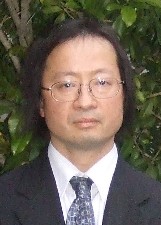Org. Synth. 2007, 84, 325
DOI: 10.15227/orgsyn.084.0325
A NEW PRACTICAL ONE-POT CONVERSION OF PHENOLS TO ANILINES: 6-AMINO-3,4-DIHYDRO-1(2H)-NAPHTHALENONE
[1(2H)-Naphthalenone, 6-amino-3,4-dihydro-]
Submitted by Masahiro Mizuno
1 and Mitsuhisa Yamano
1.
Checked by Jun Takeuchi and Jonathan A. Ellman.
1. Procedure
A. 2-Bromo-2-methylpropanamide (1): A 250-mL, three-necked, round-bottomed flask, fitted with a thermometer, pressure-equalizing dropping funnel and equipped with a mechanical stirrer is charged with 28.0–30.0% aqueous ammonium hydroxide (35.7 mL, approximately 600 mmol) (Note 1) and water (44.3 mL). The dropping funnel is charged with 2-bromo-2-methylpropanoyl bromide (50.0 g, 217.5 mmol) (Note 1), and the mixture is cooled below 5 °C (internal temperature) using a brine/ice bath with stirring. The 2-bromo-2-methylpropanoyl bromide is added dropwise slowly with stirring so that the internal temperature does not rise above 15 °C with cooling using a brine/ice bath (Caution: Exothermic reaction!). Stirring is continued for 1 h after the addition is complete, with the temperature of the reaction mixture maintained between 0 and 5 °C. The resulting white precipitate is collected by filtration on a glass filter funnel and washed three times with 40 mL of water to give 1 (33.0–33.5 g, 91.4–93.8 %) as a white crystalline powder (Note 2).
B. 6-Amino-3,4-dihydro-1(2H)-naphthalenone (5): A 500-mL, three-necked, round-bottomed flask, fitted with a reflux condenser, thermometer, addition funnel and equipped with a large magnetic stirring bar is charged with 3,4-dihydro-6-hydroxy-1(2H)-naphthalenone (2) (10.0 g, 61.7 mmol) (Note 1) and N,N-dimethylacetamide (90 mL) (Note 1). Sodium hydroxide (7.40 g, 185 mmol) (Note 1) is added into the flask by temporarily removing the addition funnel and the resulting mixture is stirred at 20–30 °C (Note 3) for 1 h. 2-Bromo-2-methylpropanamide (1) (30.7 g, 185 mmol) is added to the reaction mixture (Note 4) through the addition funnel, and the resulting mixture is stirred at 25–35 °C (Note 3) for 5 h. After the reaction period (Note 5), sodium hydroxide (22.2 g, 555 mmol) is added, and the resulting mixture is stirred for 1 h with heating to 50–60 °C (internal temperature) using an oil bath. After the reaction period (Note 6), water (90 mL) is added by use of an addition funnel, and the mixture is heated at reflux using an oil bath for 1 h (internal temperature is 85–95 °C). Water (180 mL) is added to the reaction solution using an addition funnel, and the resulting precipitated mixture is allowed to cool slowly to 20–30 °C. The precipitated crystalline powder is collected by filtration on a glass filter funnel (Note 7) and washed three times with 90 mL of water to give 5 (6.28 g, 63.2%) as a brown crystalline powder (Notes 8 and 9).
2. Notes
1.
2-Bromo-2-methylpropanoyl bromide and 3,4-dihydro- 6-hydroxy-1(2H)-naphthalenone (2) were purchased from Aldrich Chemical Company, Inc. The submitters purchased 25–27.9% aqueous
ammonium hydroxide, N,N-dimethylacetamide and sodium hydroxide from Wako Pure Chemical Industries, Ltd. The checkers purchased
N,N-dimethylacetamide and sodium hydroxide from Aldrich Chemical Company, Inc. The checkers purchased 28.0–30.0% aqueous
ammonium hydroxide from EMD Chemicals, Inc. All of the reagents were used without further purification.
2.
2-Bromo-2-methylpropanamide (
1) showed the following physical data: mp 146–148 °C; IR (film): 3382, 3187, 1652, 1625, 1111 cm
−1;
1H NMR
pdf (400 MHz, CDCl
3) δ: 1.97 (s, 6 H), 6.20 (br, 1 H), 6.60 (br, 1 H);
13C NMR
pdf (100 MHz, CDCl
3) δ: 32.3, 61.1, 174.9; MS (EI):
m/z 167 (3), 165 (3), 123 (23), 121 (23), 86 (100); Anal. Calcd. for C
4H
8BrNO: C, 28.94; H, 4.86; N, 8.44; Br, 48.13. Found: C, 28.71; H, 4.96; N, 8.33. The submitters reported that HPLC analysis was performed on YMC-Pack ODS-A302 column (150 mm×4.6 mm i.d.) with 50 mM aqueous KH
2PO
4 solution-MeCN (65:35) at 25 °C. Detected at 254 nm(UV) t
R: 2.7 (area 100.0%)
3.
After the addition of the reagents, the internal temperature gradually rose to approximately 30 °C and then over time returned to ambient temperature.
4.
This reaction was slightly endothermic.
5.
Although the alkylation reaction was not complete after 5 h, the procedure could be continued with no problem. The submitters reported that the intermediate formed at this stage, 2-methyl-2-[(5-oxo-5,6,7,8-tetrahydro- 2-naphthalenyl)oxy]propanamide (
3), can be isolated without further purification by the addition of water to the reaction mixture. Intermediate
3 isolated by the submitters in this fashion showed the following physical data: HPLC (YMC-Pack ODS-A302 column (150 mm × 4.6 mm i.d.) with 50 mM aqueous KH
2PO
4 solution-MeCN (80:20) at 25 °C. Detected at 254 nm (UV)) t
R: 4.5(
1), 11.1(
2), 20.4(
3, area 99.4%); mp 117.5–119.5 °C; IR (KBr): 3357.5, 3164.6, 1687.4, 1664.3, 1604.5 cm
−1;
1H NMR (300 MHz, CDCl
3) δ: 1.61 (s, 6 H), 2.12 (quint,
J = 6.1 Hz, 2 H), 2.61 (t,
J = 6.2 Hz, 2 H), 2.91 (t,
J = 6.1 Hz, 2 H), 5.65 (br, 1 H), 6.41 (br, 1 H), 6.75 (d,
J = 2.3 Hz, 1 H), 6.84 (dd,
J = 8.6 Hz, 2.4Hz, 1 H), 7.98 (d,
J = 8.7 Hz, 1 H);
13C NMR (75 MHz, CDCl
3) δ: 23.7, 25.5(2C), 30.4, 39.3, 81.8, 118.7, 119.0, 128.1, 129.6, 146.9, 159.2, 177.4, 197.6; MS (EI):
m/z 247 [M]
+; Anal. Calcd. for C
14H
17NO
3: C, 68.00; H, 6.93; N, 5.66. Found: C, 67.71; H, 6.76; N, 5.71.
6.
The submitters reported that this intermediate, 2-hydroxy-2-methyl-
N-(5-oxo-5,6,7,8-tetrahydro-2-naphthalenyl)propanam-ide (
4), can be isolated without further purification by the addition of water to the reaction mixture. Intermediate
4 isolated by the submitters in this fashion showed the following physical data: HPLC (YMC-Pack ODS-A302 column (150 mm × 4.6 mm i.d.) with 50 mM aqueous KH
2PO
4 solution-MeCN (80:20) at 25 °C. Detected at 254 nm (UV)) t
R: 4.5(
1), 11.1(
2), 17.7(
4, area 99.6%), 20.4(
3); mp 162.5–163 °C; IR (KBr): 3305.4, 1672.0, 1600.6, 1540.9 cm
−1;
1H NMR (300 MHz, CDCl
3) δ: 1.58 (s, 6 H), 2.14 (quint,
J = 6.2 Hz, 2 H), 2.65 (t,
J = 6.2 Hz, 2 H), 2.73(s, 1 H), 2.96 (t,
J = 6.2 Hz, 2 H), 7.31 (dd,
J = 8.5, 2.1 Hz, 1 H), 7.78 (d,
J = 1.6 Hz, 1 H), 8.01 (d,
J = 8.5 Hz, 1 H), 8.90 (br, 1 H);
13C NMR (75 MHz, CDCl
3) δ: 23.3, 27.8(2C), 30.0, 39.0, 74.2, 117.6, 118.4, 128.6, 128.7, 142.1, 146.4, 175.1, 197.8; MS (FAB):
m/z 248 [M+H]
+; Anal. Calcd. for C
14H
17NO
3: C, 68.00; H, 6.93; N, 5.66. Found: C, 68.19; H, 7.06; N, 5.64.
7.
After the reaction mixture was stirred for 14 h, the checkers collected the precipitated crystalline powder.
8.
The checkers obtained a 60.4% yield when the reaction was run on half-scale. 6-Amino-3,4-dihydro-1(2
H)-naphthalenone (
5) showed the following physical data: mp 128–130 °C; IR(film): 3423, 3349, 3239, 1567, 1553, 1356, 1325, 1292 cm
−1;
1H NMR
pdf (400 MHz, CDCl
3) δ: 2.05 (quint,
J = 6.4 Hz, 2 H), 2.56 (t,
J = 6.4 Hz, 2 H), 2.81 (t,
J = 6.4 Hz, 2 H), 4.28 (br, 2 H), 6.41 (d,
J = 2.0 Hz, 1 H), 6.53 (dd,
J = 8.4, 2.0 Hz, 1 H), 7.87 (d,
J = 8.4 Hz, 1 H);
13C NMR
pdf (100 MHz, CDCl
3) δ: 23.2, 29.9, 38.7, 112.3, 113.0, 123.6, 129.6, 147.0, 151.4, 197.0; MS (EI):
m/z 161 (76, [M]
+), 133 (100), 105 (28); Anal. Calcd. for C
10H
11NO: C, 74.51; H, 6.88; N, 8.69. Found: C, 74.24; H, 6.93; N, 8.67.
9.
The submitters reported the isolation of an off-white crystalline powder. The submitters reported that HPLC analysis was performed on a YMC-Pack ODS-A302 column (150 mm × 4.6 mm i.d.) with 50 mM aqueous KH
2PO
4 solution-MeCN (80:20) at 25 °C. Detected at 254 nm (UV) t
R: 4.5(
1), 8.6(
5, area 100.0%), 11.1(
2), 17.7(
4), 20.4(
3).
Handling and Disposal of Hazardous Chemicals
The procedures in this article are intended for use only by persons with prior training in experimental organic chemistry. All hazardous materials should be handled using the standard procedures for work with chemicals described in references such as "Prudent Practices in the Laboratory" (The National Academies Press, Washington, D.C., 2011 www.nap.edu). All chemical waste should be disposed of in accordance with local regulations. For general guidelines for the management of chemical waste, see Chapter 8 of Prudent Practices.
These procedures must be conducted at one's own risk. Organic Syntheses, Inc., its Editors, and its Board of Directors do not warrant or guarantee the safety of individuals using these procedures and hereby disclaim any liability for any injuries or damages claimed to have resulted from or related in any way to the procedures herein.
3. Discussion
Since more phenols are generally more available than the corresponding anilines, several methods have been developed for the direct conversion of phenols to anilines.
These methods include the Bucherer reaction
2 and activation of phenols with 4-chloro-2-phenylquinazoline
3 or diethyl chlorophosphate;
4 however, all of these methods suffer from drawbacks. The Bucherer reaction is restricted to naphthalenes and related heterocycles, whereas benzene derivatives are much less reactive. Rearrangement of aryloxyquinazoline, prepared from 4-chloro-2-phenylquinazoline, requires extremely high temperatures (approximately 300 °C) and strongly basic conditions. Preparation of aryl diethyl phosphate esters requires the use of toxic diethyl chlorophosphate and potassium metal in liquid ammonia.
Another method, which has been used for the conversion of phenols to anilines, is an alkylation-Smiles rearrangement-hydrolysis
5 sequence. However, this method also has some disadvantages. The three-step process requires the use of sodium hydride and
N,
N-dimethylformamide, which has the risk of causing an exothermic, uncontrollable reaction.
6Recently, palladium-catalyzed amination of aryl sulfonates, e.g., aryl triflates and aryl nonaflates, has been investigated.
7 However, this method requires that aryl sulfonates be synthesized from the corresponding phenols. The high cost of palladium and the potential for metal contamination of the final product are issues associated with this method.
6-Amino-1-tetralone (
5), which is an important synthetic intermediate, has been synthesized by two general synthetic methods. The first of these involves a Friedel-Crafts ring-closure step near the end of the synthetic sequence. The starting material, β-benzoylpropionic acid, was nitrated to give the
meta-nitro compound, which was then reduced to provide the amine. Acetylation of the amino group and hydrogenolysis of the ketone carbonyl generated the acetamido acid. Friedel-Crafts cyclization provided 6-acetamido-1-tetralone, which was hydrolyzed to aniline
5.
8 An alternative synthetic method involved the introduction of the ketone carbonyl into the saturated side chain as a key step. The tetralin starting material was acetylated to give 6-acetyltetralin, which then was converted to the oxime. Beckmann rearrangement of the oxime gave 6-acetamidotetralin. Selective oxidation gave 6-acetamido-1-tetralone, which was hydrolyzed to aniline
5.
8b,9These two general methods required many steps to produce aniline
5. Our novel three-step, one-pot Smiles rearrangement process
10 is a practical and useful alternative route to this compound.
ONE-POT CONVERSION OF PHENOLS (THIOPHENOLS) TO ANILINES
Appendix
Chemical Abstracts Nomenclature (Collective Index Number);
(Registry Number)
6-Amino-3,4-dihydro-1(2H)-naphthalenone, 6-amino-1-tetralone:
1(2H)-Naphthalenone, 6-amino-3,4-dihydro-; (3470-53-9)
2-Bromo-2-methylpropanamide:
Propanamide, 2-bromo-2-methyl-; (7462-74-0)
2-Bromo-2-methylpropanoyl bromide:
Propanoyl bromide, 2-bromo-2-methyl-; (20769-85-1)
3,4-Dihydro-6-hydroxy-1(2H)-naphthalenone, 6-hydroxy-1-tetralone:
1(2H)-Naphthalenone, 3,4-dihydro-6-hydroxy-; (3470-50-6)
2-Methyl-2-[(5-oxo-5,6,7,8-tetrahydro-2-naphthalenyl)oxy]propanamide:
Propanamide, 2-methyl-2-[(5,6,7,8-tetrahydro-5-oxo-2- naphthalenyl)oxy]-; (418761-91-8)
2-Hydroxy-2-methyl-N-(5-oxo-5,6,7,8-tetrahydro-2-naphthalenyl)propanamide:
Propanamide, 2-hydroxy-2-methyl-N-(5,6,7,8-tetrahydro-5-oxo- 2-naphthalenyl)-; (418761-92-9)
 |
Masahiro Mizuno was born in 1965 in Shiga, Japan. After he received his M.S. in 1990 under Professor Mikio Hori from Gifu Pharmaceutical University, he joined Takeda Pharmaceutical Company Limited as a process chemist and has had numerous projects for the manufacturing of drug candidates. Based on his research results during his 16-year career, he obtained his Ph.D. in 2007 under Professor Hironao Sajiki from Gifu Pharmaceutical University. He has been listed in MARQUIS Who's Who in the World and will be listed in IBC 2000 Outstanding Intellectuals of the 21st Century.
|
 |
Mitsuhisa Yamano was born in 1961 in Osaka, Japan. After undergraduate studies at Kyoto University in 1983, he obtained his M.Sc. degree in engineering at Kyoto University in 1985. Since 1985, he has worked at Takeda Pharmaceutical Company Limited as a researcher on process development for new drug candidates. He spent 1 year in the group of Professor Barry M. Trost at Stanford University as a visiting scholar from 1999 until 2000. His research interests include process chemistry, especially asymmetric synthesis.
|
 |
Jun Takeuchi was born in Kyoto, Japan, in 1967 and received his B.S. in 1991 and M.S. in 1993 from Osaka University. He received his Ph.D. in 1996 under the direction of Professor Chuzo Iwata from Osaka University. He has been working at ONO Pharmaceutical Co., Ltd. since 1996. In 2006, he began his visiting scholar studies at the University of California, Berkeley in the laboratories of Professor Jonathan A. Ellman. His research interest is in the area of medicinal chemistry.
|
Copyright © 1921-, Organic Syntheses, Inc. All Rights Reserved